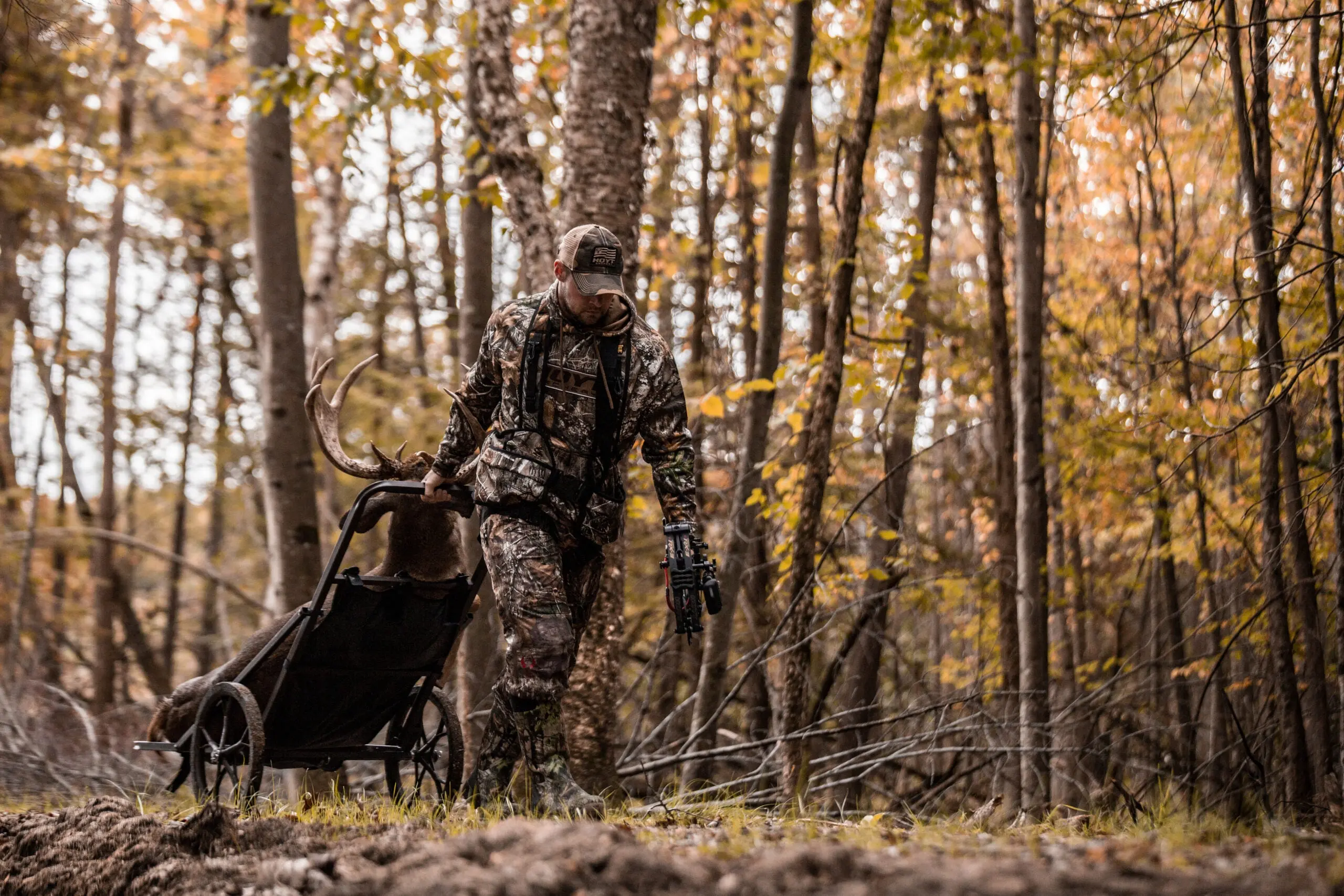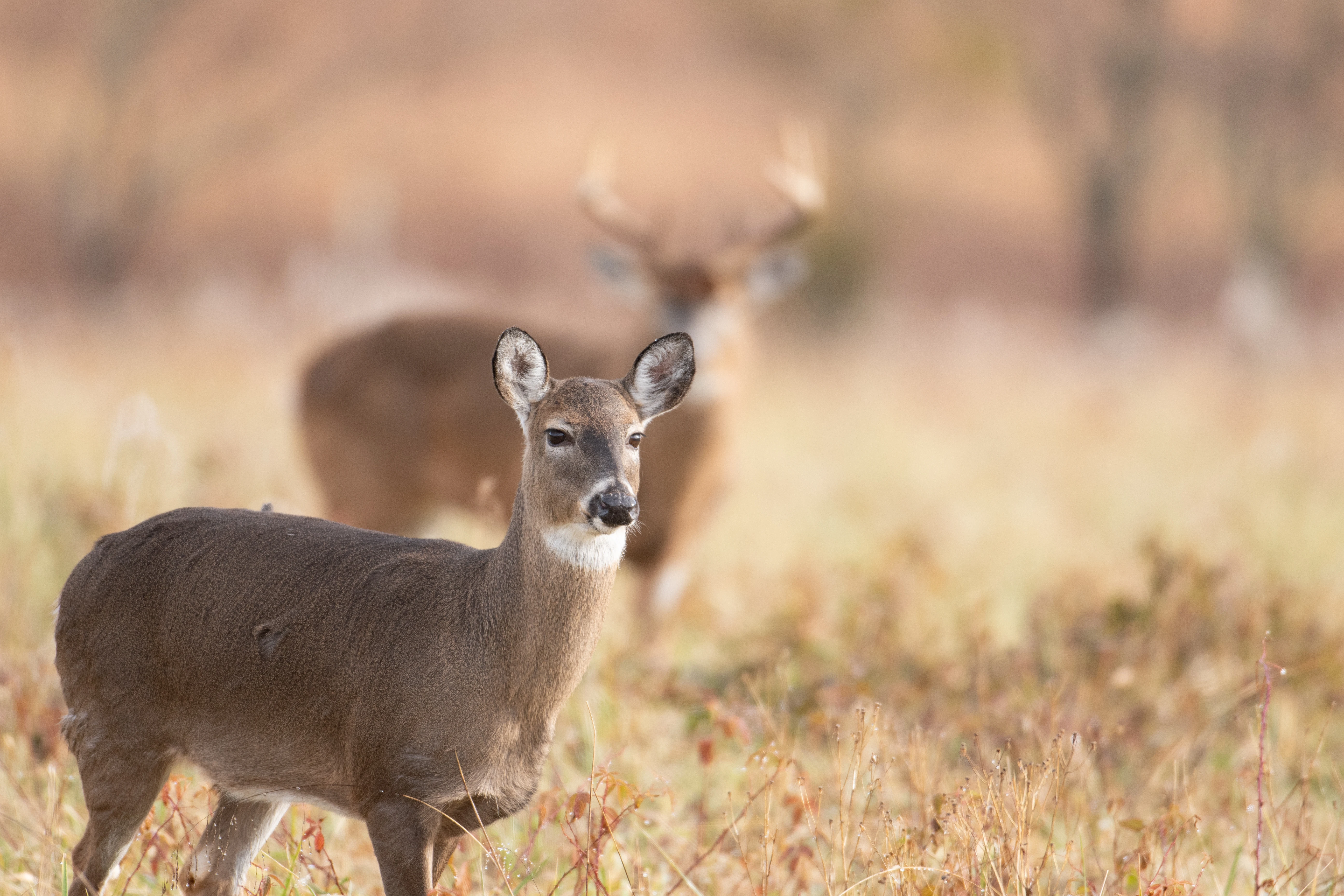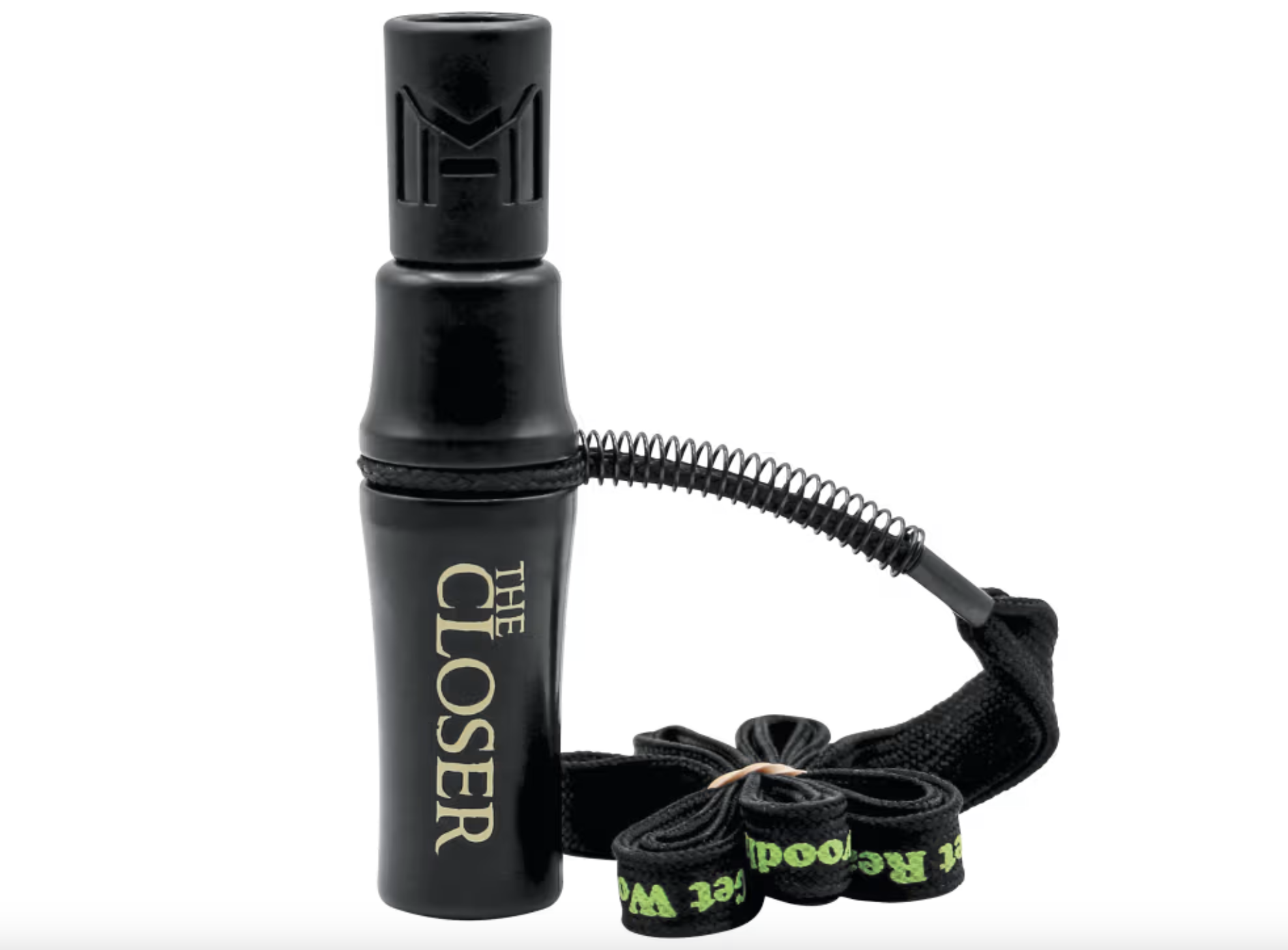We're in the heart of the rut now. If you hunted this past week, your woods were probably rocking, with does flying through the timber, tongues lolling, and bucks hot on their tails. As we move into this weekend, though, the chasing phase is winding down as more does pair up with bucks. And while this usually comes with a dip in overall deer activity—and might seem a bit of a let-down for hunters—it’s actually a stellar time to be in the woods if you're patient.
The reason why Sunday, November 17, is my pick for the overall best day of the 2024 rut is twofold: First, with the majority of does now coming into or having already come into estrous, the oldest, biggest bucks in the herd are now fully engaged (see below). Meanwhile, firearms seasons are opening across much of whitetail range, creating an influx of hunters that put otherwise locked-down bucks their feet to avoid pressure. If you know how to play your cards right, you can use this combination of rutting activity and pressured deer to your advantage and hang your tag on a monster.
Related: The Best Days of the 2024 Whitetail Rut
Rut Phase: Peak (or Just Past Peak) Breeding

The chasing phase is the rut’s pre-game show. It's flashy. It's exiting. But a lot of the hoopla involves junior bucks and pretenders running around and causing a fuss. A good share of the mature bucks don’t participate in the prelude. They don’t waste a bunch of energy chasing does and willing things to happen. Instead, they wait until running down a girlfriend actually means a good chance of breeding her. That is, they wait until now. By this point, most of those old-timer bucks have bred a doe (or two), and they’re dead-dog serious about finding the next one. If you know the where to arrange an encounter, it's a great chance to tag a giant.
In most of the whitetail range, we are either right at peak breeding or a little past it. You can definitely catch a big boy between does during lockdown, especially with gun hunters in the woods, but post-lockdown is even better. So, keep in mind that the precise timing of the breeding peak can vary within a relatively small area. If you have permission on multiple properties and your morning hunt is dead, try making a move and you may find very different rutting activity.
November 17 Morning Hunt Plan: Settle In To a Doe Thicket

If you have a good idea where does bed on your property, take a minute to think of the thickest, nastiest doe-bedding cover you have, a real sanctuary where the deer feel safe—and plan to sit there on Sunday morning. These setups work on two levels: First, any buck seeking his next doe to breed is going to search the spots he knows hold them on a consistent basis, and a bedding area is a no-brainer. Second, if gun seasons have opened in your area, any deer feeling pressure from hunters are going to flee to the sanctuaries where they feel safe. If you’re tucked into one of these areas, you could be looking at not only consistent, all-day movement but a crack at a really nice buck.
Where I hunt, the perfect doe-bedding spot now is a ridge end with thick cover. I'll hang a stand where the hill breaks off steeply, so that the prevailing wind blows out off the point and deer simply can’t catch my scent, thanks to the elevation drop. But no matter where you set up for this hunt, patience is key. You need to stay in your stand through the midday hours. The action at dawn is often pretty subdued now, but deer will pile onto the ridge end or other thick bedding sanctuary starting around mid-morning. So, bring a book, a lunch, and an extra measure of patience, as your buck is more likely to show at noon than he is at daybreak.
November 17 Evening Hunt Plan: Find the Hidden Food

One of the great myths of both rutting and pressured deer is that food is no longer important to them. Of course, a buck dogging a doe is not fretting about his next meal, and any deer fleeing from a drive is far from worried about scarfing up a mouthful of clover. But as soon as the major action or trouble is over, whitetails settle down pretty quickly and, being ever-hungry, their thoughts turn to eating again. What's different now is that they are far less likely to feed in the wide-open ag field and plots they visited in the early season. During this period, pressured deer and bucks tending does are going seek discreet, hidden food sources.
Secluded oak stands, clearcut edges, and the occasional soft mast tree (apples, crabapples, pears, etc.) tucked back in the timber can be killer spots to look for deer in the afternoon, whether it’s a breeding pair or a buck that fled a hunter or three in the morning and is settling in to a safe spot for the afternoon and wants to grab a bite. And don’t forget water sources now; not only do bucks get thirsty as they run big, but the cover surrounding creeks, seeps, springs, and ponds is typically thick and lush, providing both security and succulent grasses, sedges, and browse. Finally, any small hidey-hole food plots—especially those adjacent to thick cover—can really shine right now. Sneak in very quietly, as deer may be tucked in close, and wait for a buck-and-doe pair to stand up and grab a bite, or for a stud buck to come looking for a feeding doe.
Gear Tip: Buy a Better Bleat

If you carry a doe call in your pack, chances are high that it’s one of the ubiquitous can-style calls. I’ve got at least one in my gear bag all the time, and I’ve used them with success. The trouble with a can call is that it can only manage one volume/tone, and it can also be irritating to carry, with its propensity for making calls when you don’t want it to.
I have recently switched to Woodhaven’s The Closer tube-style doe call, which can produce varying tones and volumes of doe bleats, as well as fawn bawls. It can also be worn on a lanyard around your neck, where it’s way more accessible and easier to use. And, of course, since it’s a mouth-blown call, it only makes sounds when you want it to. I love to use doe bleats any time I start calling to a buck; not only am I making the sounds of a deer I know he’s looking for, I’m not scaring him off if he’s not in the mood to be near–much less fight–another buck. Many bucks will trot right into a doe bleat now, but even if they don’t, you can always move up the ladder of aggression (grunts, roar, snort-wheezes) if needed.


